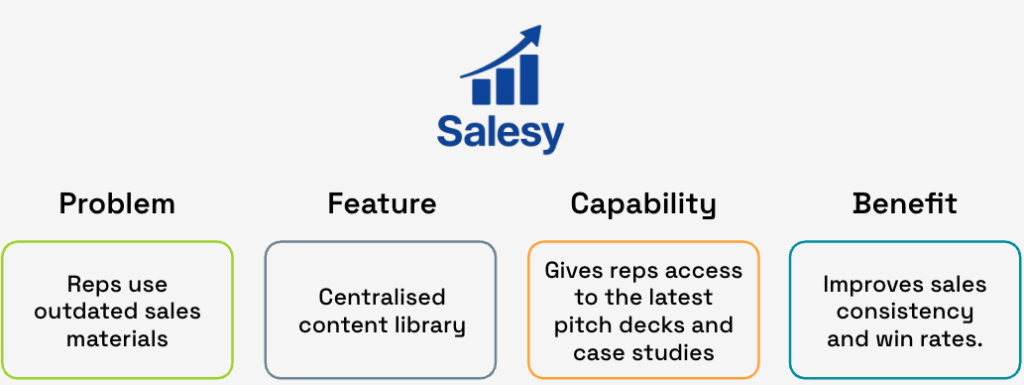4 Truth Bombs
for CMOs






Data analytics and tech brands need some tough love.
The market in 2025 is unforgiving. Budgets are under scrutiny, pipelines are harder to build, and buyer behaviour is anything but linear.
For CMOs in this space, the stakes are even higher: especially when it comes to proving campaign ROI and beating the blue chips.
You don’t need another trend blog, or vague tactics for success. You need honest, real advice that’ll help you cull the habits that are silently stalling your pipeline and draining your budget.
Enter, our four truth bombs.
What you’re selling isn’t that different (and it doesn’t really matter anyway)
The first of our lessons stems from ‘Marketing Management’ written by Phillip Kotler in the 1960s. It introduced the idea that differentiation and USPs are core pillars of a competitive marketing strategy; but times have changed.
Right now, only 5% of brands are considered unique by consumers.
For data analytics and tech brands where solutions often sound the same, and value is buried in technical language, this lack of perceived difference is especially acute. Especially given the fact that development cycles are shorter and industry breakthroughs lasting only a matter of months.
What once separated your USPs from the pack for years becomes a universal feature quicker than ever before.
This is why you need to focus on distinctiveness (the unique way you present yourself), rather than feature-led differentiation. After all, your brand is more likely to be remembered for being distinctive than it is for being different – it’s called ‘The Von Restorff Effect.’ And there’s evidence to back it: B2B brands with clear, distinct identities are four times more likely to see customer engagement.
You need help from Agentic AI
You don’t need convincing on the power of AI. You build with it. Sell it. Integrate it into your products and solutions.
But when it comes to your own marketing engine there’s often hidden inefficiencies across campaign planning, execution, optimisation. And in your fast-moving industry, where speed-to-market matters, you can afford to be bogged down by sluggish processes.
Agentic AI can fix that. Not by replacing people, but by taking the weight of repetitive tasks and decision-making off your teams’ plates.
Used right, Agentic AI becomes your behind-the-scenes operator:
- Streamlining SDR workflows
- Automating nurture and comms flows
- Powering deeper content personalisation
- Running persona validation and insight generation
With your team free from time-intensive processes, they’re free to focus on more valuable aspects of marketing including strategy, creativity, and innovation.
Cut the crap (or at least, trim it down and introduce some gold)
Sell the sizzle, not the sausage. For years, marketers have heard variations on this advice (sell the hole, not the drill, anyone?), but it’s time we moved on.
With benefits foregrounded by B2B brands, the marketplace is awash with generic statements most people simply tune out. This is especially true in the data analytics and tech industry where value is often buried in buzzwords or abstract outcomes.
Buyers want clarity, not complexity. They also want a rep-free sales experience. That means shifting your product’s messaging’s focus away from the ‘what’ towards the ‘how’.
A great way to approach this shift is using Anthony Pierri’s concept for messaging, specifically, the difference between features, capabilities and benefits. It’s the second part of this framework, capabilities, that B2B brands often overlook – and it’s here that modern buyers get the answers to the questions they are asking.
- Features: the technical aspects of the product
- Capabilities: What you do with the product
- Benefits: The outcome of using that product
As an example, here’s a strong message for a fictional sales platform, Salesly:

You can see what the feature is, what it enables you to do, and the outcome of using it.
People don’t trust your brand (as much as they trust you)
What do Bill Gates, Elon Musk, Richard Branson and Satya Nadella all have in common? They have vastly bigger social media followings than the multi-billion dollar companies that they lead.
Social Insider’s 2025 LinkedIn Benchmarks report indicated that posts from individuals receive 561% more interactions that company page posts. Across all B2B interactions, people – especially since the pandemic – trust content from other people more than that delivered by brands. The human element gives it authenticity.
Moving forward B2B leaders need to step out from behind the camera and put themselves into the spotlight. This isn’t just useful for a bump to social statistics either; there is a new wave of B2B leaders who are foregoing traditional marketing to commit completely to their personal brand to drive their businesses forward.
A starting point would be to simply take content destined for company pages, edit it and post it as an individual to test the theory. But for the biggest impact, honesty and direct communication should be at the forefront of personable posting, with ideas such as:
- Big opinions on industry topics that matter
- Warts-and-all chronicling of new product development
- Personal lessons gained from knockbacks
- Breakdowns of how your tech works and its real USPs
Fundamentally, its human-led topics, delivered by individuals that stick in the mind.
Want to build confident marketing that moves the needle?
If honest conversations, creative partnerships and work that sets you apart sounds good, feel free to get in touch with our team. We help data analytics and tech brands turn complexity into clarity—and strategy into standout campaigns.
1

 Selbey Anderson Group of agencies
Selbey Anderson Group of agencies